When it comes to skiing, the mountains of New England are often stuck with negative labels, “Ice Coast” being the most popular. “Backcountry Skiing Haven,” historically, hasn’t been one of them. That label may stick, however, thanks to efforts of groups like the Granite Backcountry Alliance (GBA), which seeks to build a strong foundation of backcountry skiers in New Hampshire and western Maine. Following a similar path as the multiple backcountry skiing advocacy organizations that have formed in neighboring Vermont, GBA has fostered a strong following in just over nine months of existence.
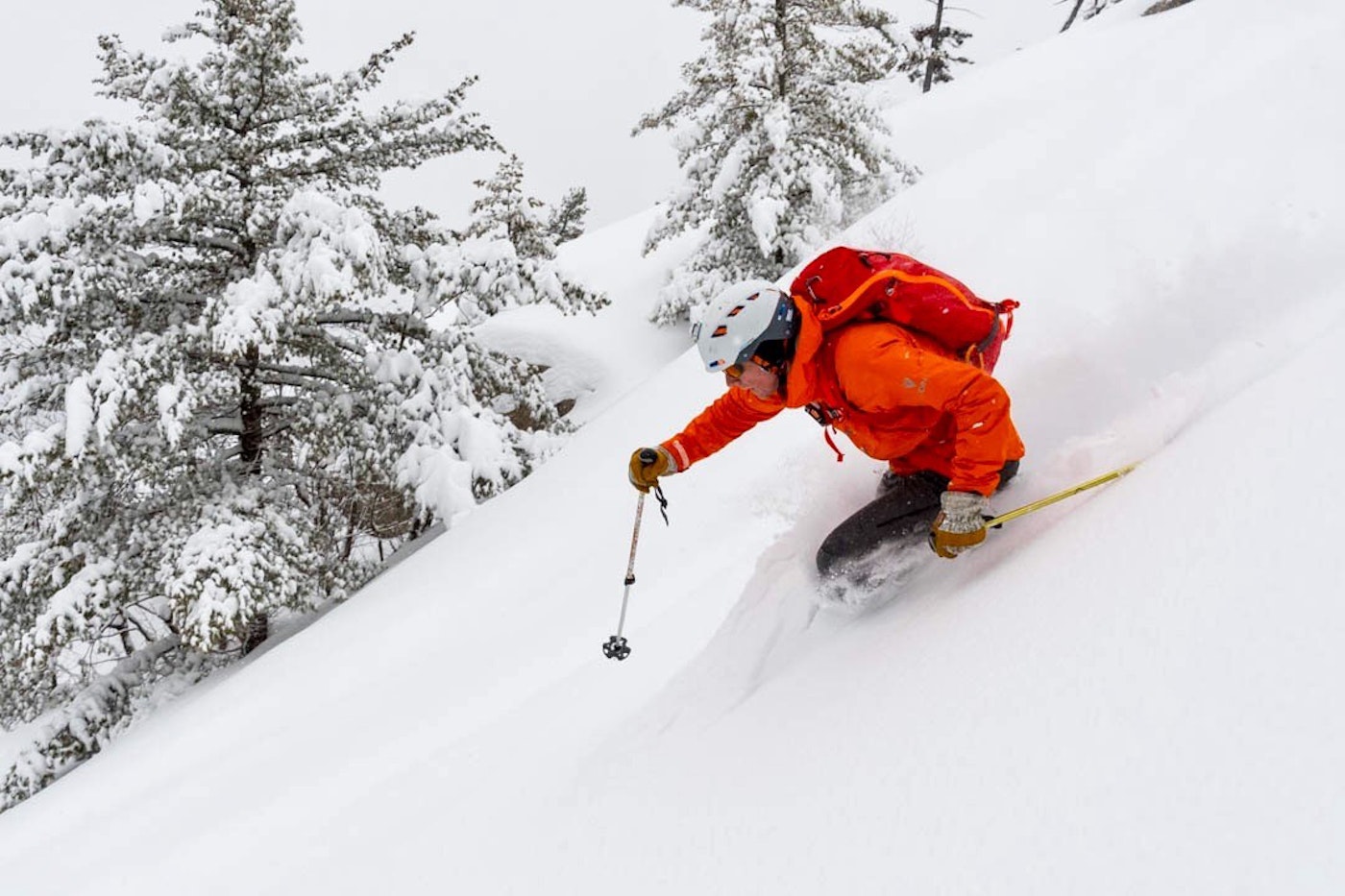
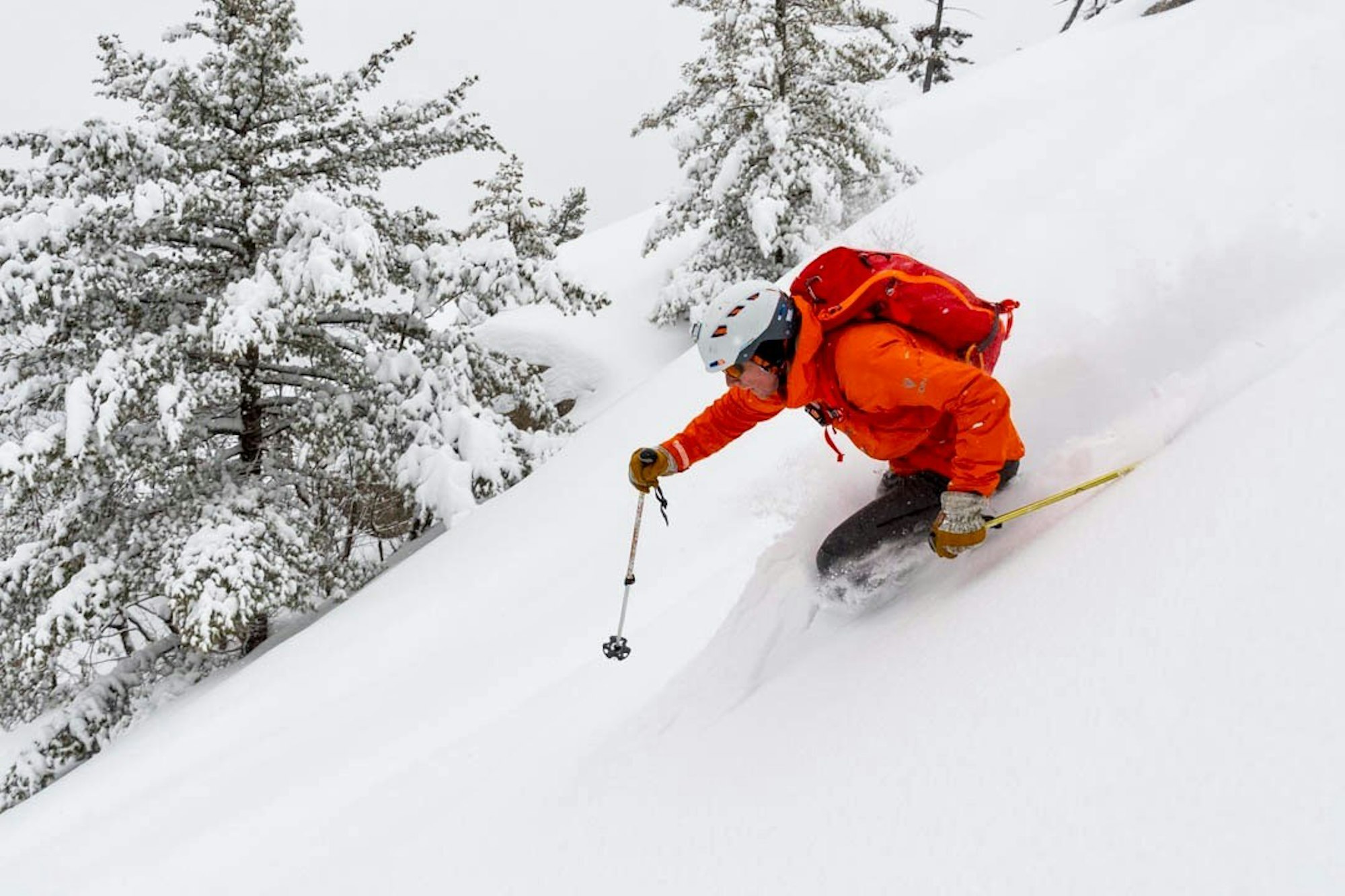
Granite BC’s long-term goal is to thin out the below-treeline terrain in the White Mountain National Forest (WMNF) and surrounding areas through a newly developed, yet strong relationship with the National Forest Service (NFS). Anybody who has ever ventured out-of-bounds on the East Coast knows that the spacing between the trees is tighter than Peter Griffin sporting spandex and young shrubbery litters the forest floor, just itching to catch a ski tip and send you face first into the ground. Opening up the forest and creating a trail system will benefit backcountry skiers and but also give the forest some breathing room.
“The area was decimated over 100 years ago by logging and when everything grew back in, it just hasn’t had the time period to naturally eliminate the smaller plants,” explains Tyler Ray, North Conway, NH resident and president of Granite BC. “Frankly, whatever open terrain that exists now is just getting hammered with traffic, so part of it is to diffuse that traffic a little bit and spread things out. But also, when speaking with foresters and folks with intimate knowledge of forestry, they’re very supportive of what we’re doing because it thins out and lets the forest breathe.”
GBA took its first significant step toward achieving its goal on May 25, when it received preliminary approval from the WMNF for two tree-skiing projects on Bartlett Mountain and South Baldface. “In terms of a designated ski glading project, it’s a first,” says Ben Leoni, legal advisor for GBA and star of Ski The East’s Working for the Weekend web series. “There are quite a few old Civilian Conservation Corps (CCC) trails that have been cut in the White Mountain National Forest, but they’ve never approved glading, so it’s a huge step to get that preliminary approval.”
Working for the Weekend, Return to Mt. Washington.
The glading on Bartlett Mountain will revive the Maple Villa Ski Trail, which was cut by the CCC in the 1930s and provides access to 2,000 vertical feet of classic East Coast tree skiing. South Baldface is a 3,547-foot peak with trees that reach its summit, however, as it currently stands, a ski descent through the trees would require a trip to the dentist immediately afterward.
With this preliminary approval, the project is set in motion. As with any large undertaking worth pursuing, there are still hurdles that will present themselves along the way. Leoni sees two big obstacles, the first being a lack of parking in the WMNF, which has caused GBA to focus its glading efforts on areas with room for cars. The second is more difficult to navigate and it entails preserving the habitat of two endangered species, the Bicknells Thrush and Canadian Lynx.
“We’ve actually received verbal approvals from a couple of areas only to have the NFS go in and realize that there are either Thrush or Lynx habitat within that zone and have to pull that initial approval,” says Leoni. “That’s a big one because Bicknells Thrush habitat is basically anything over 4,000 feet, speaking generally, in the White Mountain National Forest. That takes a lot of area off the table from the start.”
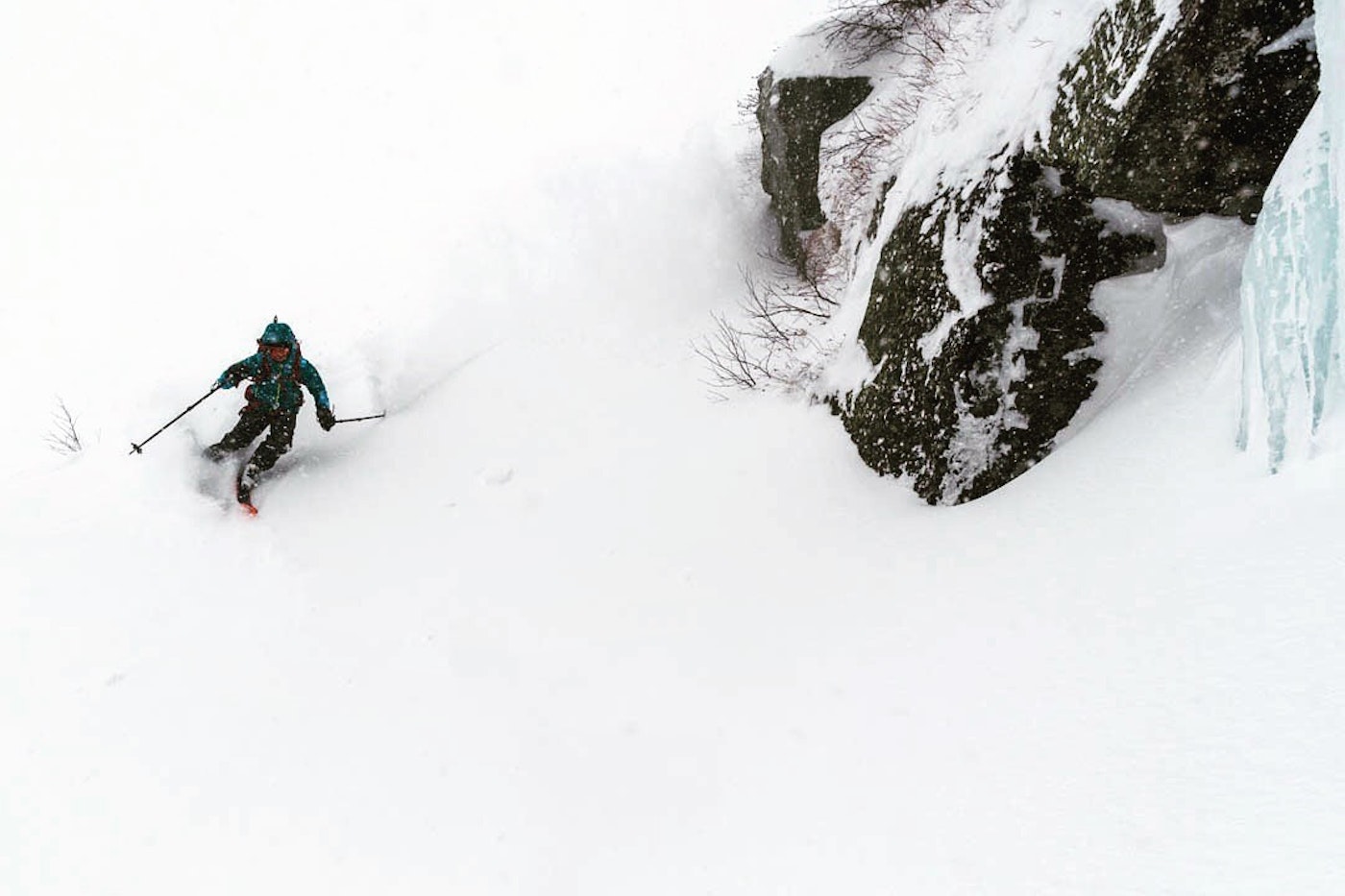
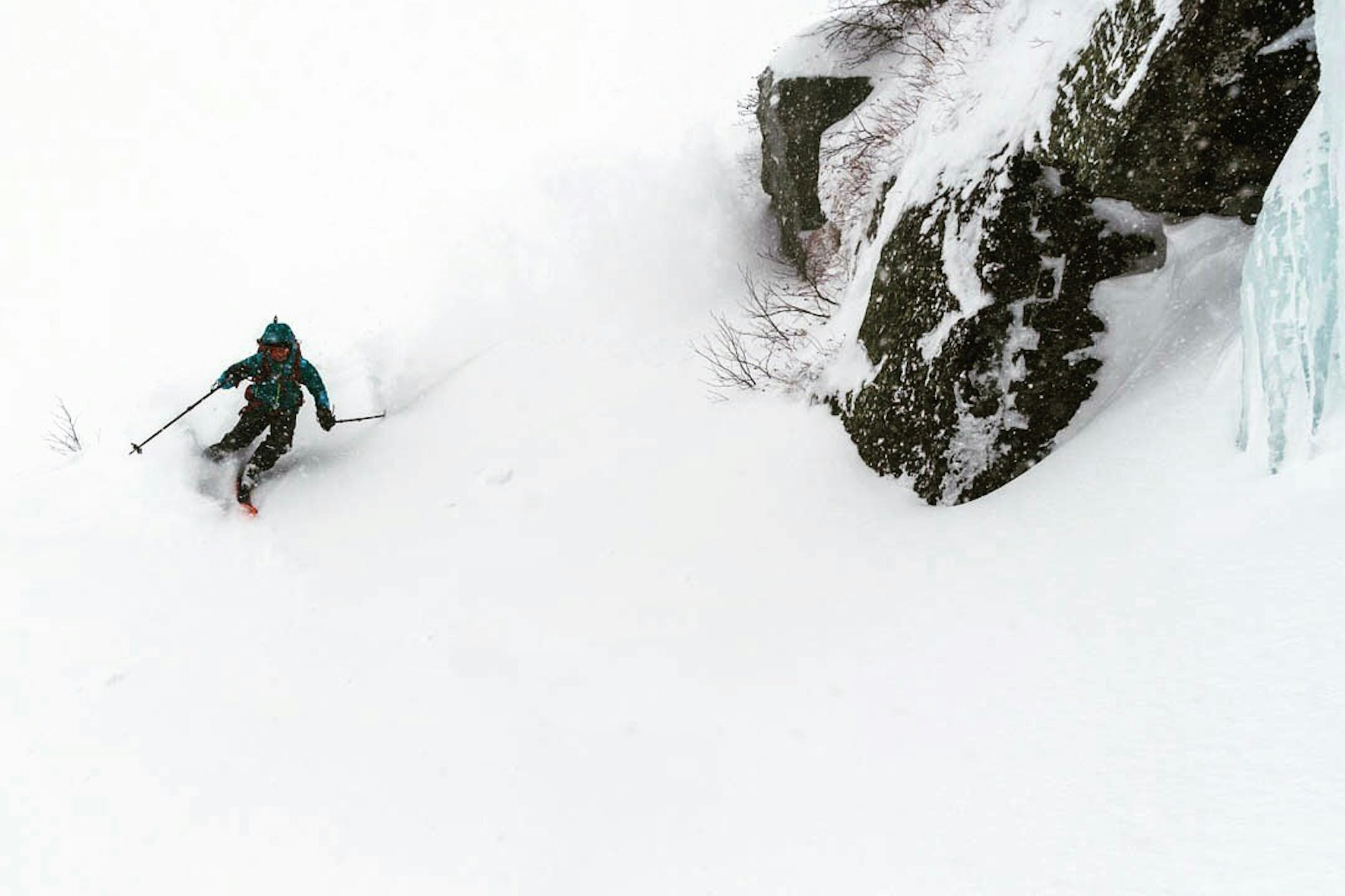
Leoni says this has caused the GBA to focus its efforts on hardwood forests below 3,500 feet. And while much of the attention has been on zones within the WMNF, Ray says that the end goal is to incorporate state and community forests bordering the WMNF in order to develop a giant network of trails that will house a wide variety of ski terrain.
“What’s really critical for us is to develop an infrastructure where we have a network of trails, not just within the WMNF, but all terrain that surrounds it in the different municipalities,” Ray describes. “Our long-term vision is to create this complimentary below-treeline network of glades where you have options from small to medium to large and different ability levels.”
He believes that by developing glades that cater to different ability levels, GBA can entice more and more skiers to join the backcountry movement. “We’re focused on these little towns surrounding the White Mountains and the terrain within the White Mountains, so we’re focused on these small communities in order to build a larger backcountry skiing community.”
And in only nine months GBA has been tremendously successful in building support. At GBA’s last fundraising event in April, 350 people were in attendance and over $10,000 dollars was raised. And, with respect to GBA’s goal, the people who come out in support vary in age from young to old and in ability type from casual to expert.
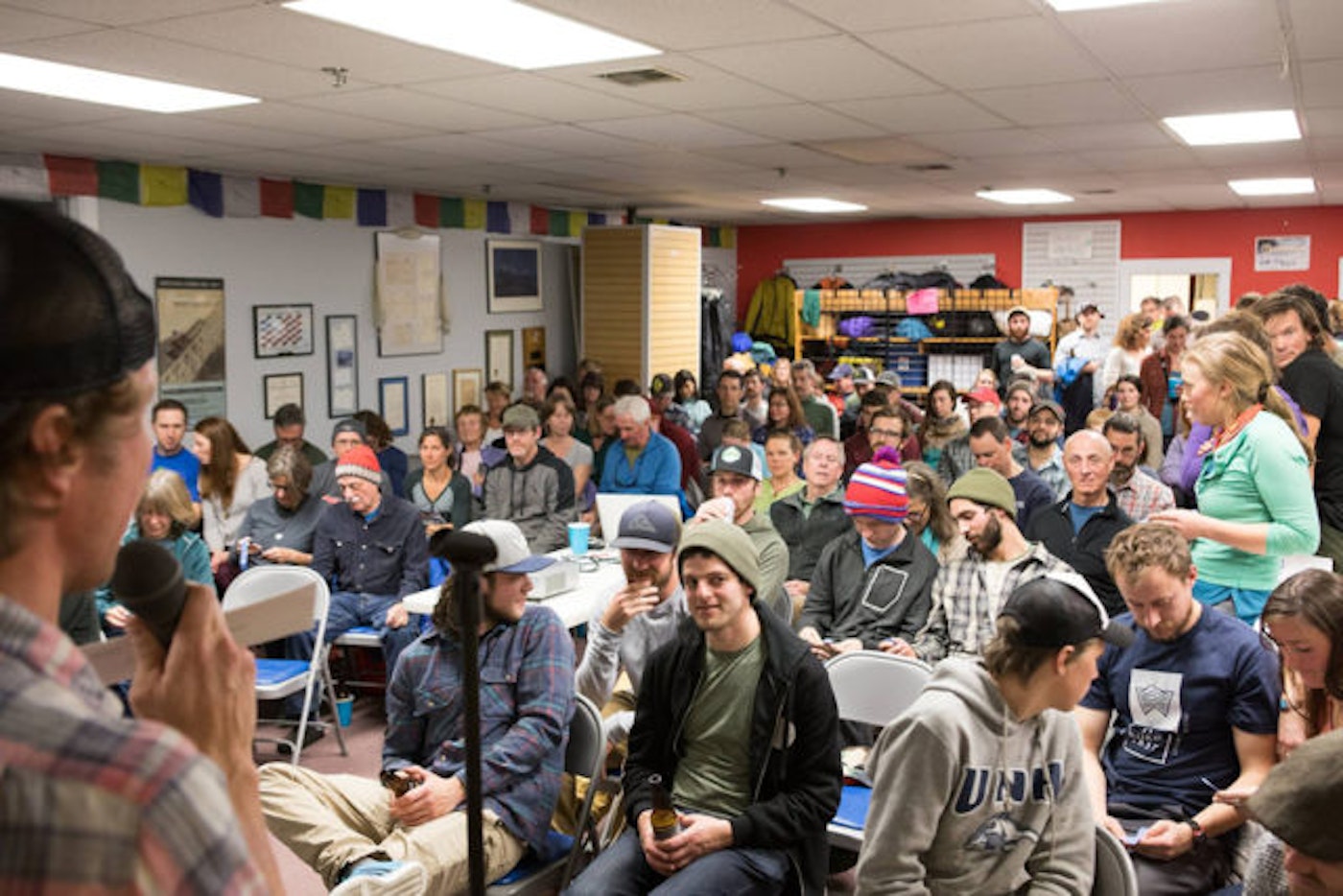
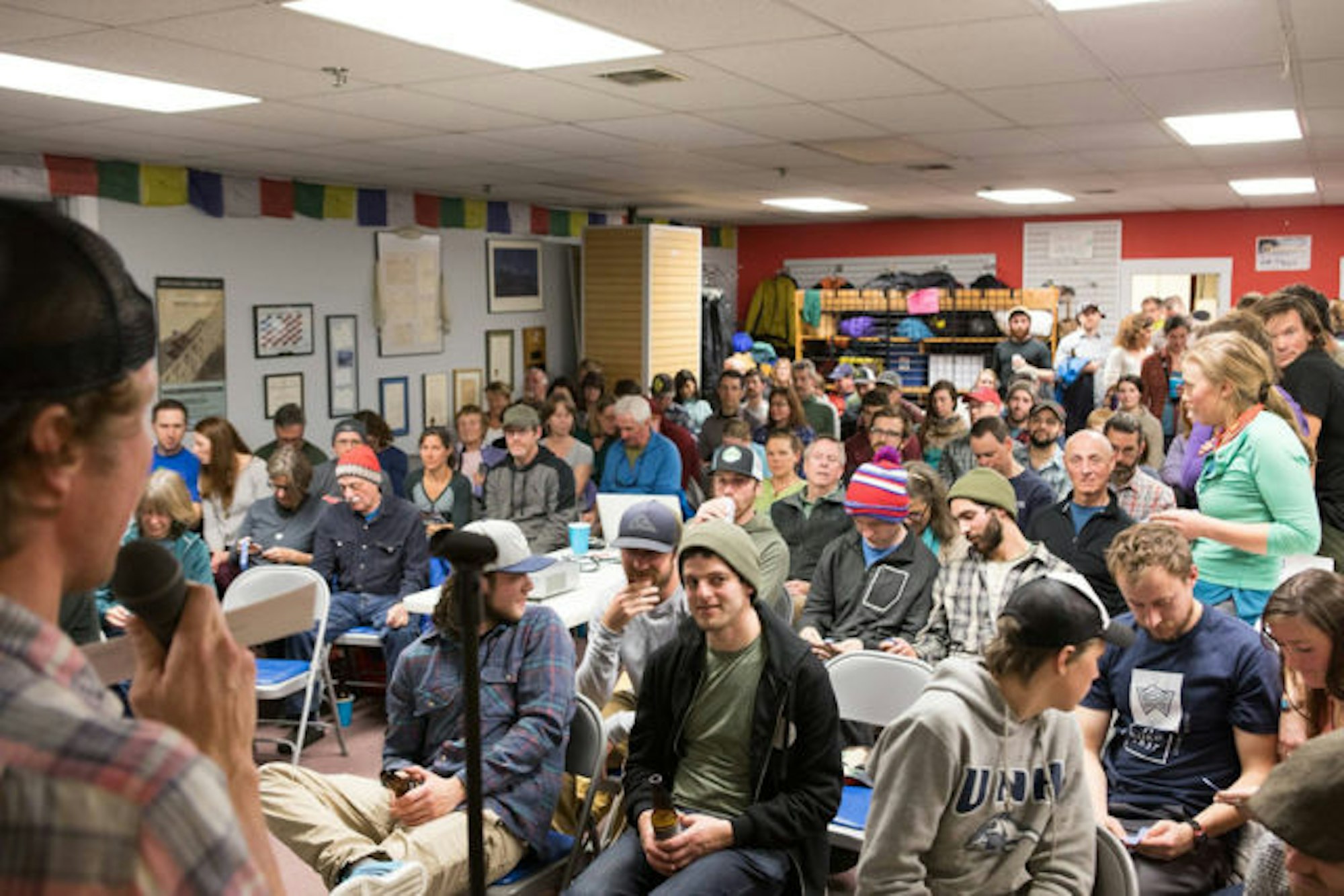
Tyler Ray speaking at the Backcountry Film Fest in November 2016. Photo: Courtesy Granite Backcountry Alliance
“One of our big projects that has had final approval up in Randolph, New Hampshire, right near the National Forest but actually in a town-owned community forest, was started by a bunch of old-timer telemark skiers in their 50s and 60s who have been skiing that zone forever,” describes Leoni. “It’s a complete mix of people. We get the entire backcountry community, it’s not limited to just the young folks or old timers, it’s a total mix.”
And for those without intimate knowledge of New England, the skiing is as incredible as the people who call the region home. The western skiing elite may turn their noses up at the thought of quality backcountry skiing on the East Coast, but the spine of the White Mountains offers up beautiful, challenging terrain, too.
“There’s classic above treeline skiing, a ton of glacial cirques that are really steep and have fantastic snow,” describes Leoni. “Then there’s what I call ‘slide skiing,’ usually below-treeline there are a ton of big, open slide paths that you can ski with great, consistent fall-line pitch. And then there’s the glades. There are a a couple of areas in the WMNF that have natural glades of either white birch or yellow birch stands that are very fun.”
Whether GBA can develop a backcountry skiing community as big and active as those in the West remains to be seen, but the fast start they’ve had certainly foreshadows a growing faction that shares one common thread: passion.
To get involved, visit granitbackcountryalliance.org.

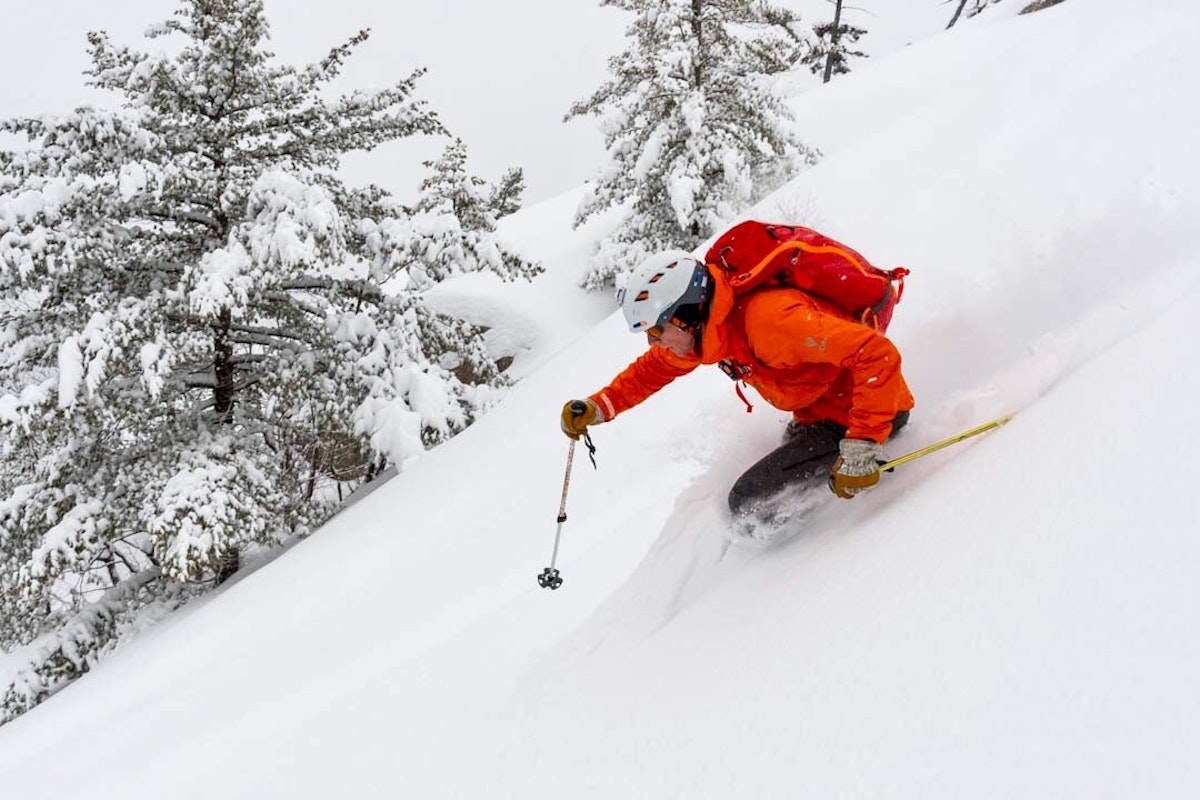

![[GIVEAWAY] Win a Head-to-Toe Ski Setup from IFSA](https://www.datocms-assets.com/163516/1765920344-ifsa.jpg?w=200&h=200&fit=crop)


![[GIVEAWAY] Win a Legendary Ski Trip with Icelantic's Road to the Rocks](https://www.datocms-assets.com/163516/1765233064-r2r26_freeskier_leaderboard1.jpg?auto=format&w=400&h=300&fit=crop&crop=faces,entropy)




![[GIVEAWAY] Win a Head-to-Toe Ski Setup from IFSA](https://www.datocms-assets.com/163516/1765920344-ifsa.jpg?auto=format&w=400&h=300&fit=crop&crop=faces,entropy)

